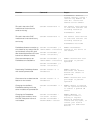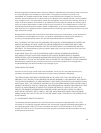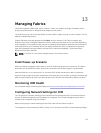
Redundancy Policies
Redundancy policy is a configurable set of properties that determine how CMC manages power to the
chassis. The following redundancy policies are configurable with or without dynamic PSU engagement:
• Grid redundancy
• Power supply redundancy
Grid Redundancy Policy
The purpose of the Grid redundancy policy is to enable a modular enclosure system to operate in a mode
in which it can tolerate AC power failures. These failures may originate in the AC power grid, the cabling
and delivery, or a PSU itself.
When you configure a system for Grid redundancy, the PSUs are divided into grids: PSUs in slots 1 and 2
are in the first grid while PSUs in slots 3 and 4 are in the second grid. CMC manages power so that if there
is a failure of either grid, the system continues to operate without any degradation. Grid redundancy also
tolerates failures of individual PSUs.
NOTE: One role of Grid redundancy is to provide seamless server operation despite failure of a
whole power grid, but the most power is available to maintain Grid redundancy when the capacities
of the two grids are approximately equal.
NOTE: Grid redundancy is only met when the load requirements do not exceed the capacity of the
weakest power grid.
Grid Redundancy Levels
One PSU in each grid is the minimum configuration necessary for use as grid redundant. Additional
configurations are possible with every combination that has at least one PSU in each grid. However, to
make the maximum power available for use, the total power of the PSUs in each leg should be as close to
equal as practical. The upper limit of power while maintaining Grid redundancy is the power available on
the weakest of the two grids.
If a CMC is unable to maintain Grid redundancy, an e-mail and/or SNMP alert is sent to administrators, if
the Redundancy Lost event is configured for alerting.
In the event of a single PSU not functioning in this configuration, the remaining PSUs in the problematic
grid are marked as online. In this state, the PSUs in the Redundant Grid if not in failed state, help in
functioning of the system without interruption. If a PSU stops functioning, the chassis health is marked
non-critical. If the smaller grid cannot support the total chassis power allocations, then Grid redundancy
status is reported as No, and the health of chassis is displayed as Critical.
Power Supply Redundancy Policy
The power supply redundancy policy is useful when redundant power grids are not available, but you
may want to be protected against a single PSU failure bringing down your servers in a modular enclosure.
The highest capacity PSU is kept in online reserve for this purpose. This forms a Power Supply
redundancy pool.
176


















